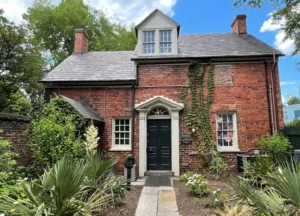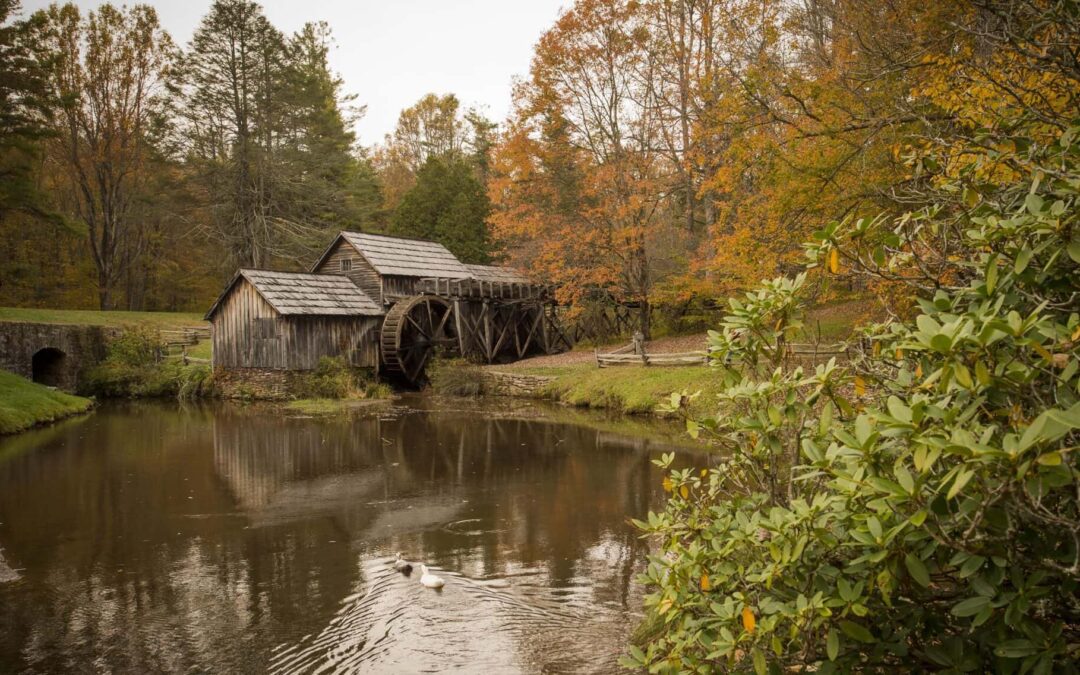
Photo courtesy of the Virginia Tourism Corporation.
The Poe Museum in Richmond is dedicated to all things Edgar Allan Poe. It features numerous structures and countless artifacts from the literary figure’s life. If you’re interested in Poe, or simply the macabre, the museum is well worth the visit.
Check out the history of the museum, as well as some of the creepiest things you’ll find there.
History
The museum’s origins date back more than 100 years when James Howard Whitty, a Poe collector and researcher, gathered a group of literary enthusiasts and decided to create a monument to Poe. Surprisingly, the effort marked Virginia’s first monument to a writer.
After an initial failed attempt, the group launched an effort in 1916 to save the “Southern Literary Messenger” building, where Poe started his journalism career. As part of the effort, the group sought to create a museum inside the building. However, the city decided to demolish the building in order to widen the street that it was on.
Luckily, the building materials were moved a few blocks away in a lot behind the Old Stone House, the city’s oldest standing residential building. The salvaged bricks and granite were used to construct paths around a new Poe memorial garden and shrine. The location turned out to be fitting, given that Poe is documented to have passed it several times as a young man.
By 1922, the museum had opened to the public.

Photo courtesy of the Virginia Tourism Corporation.
Creepy things you’ll see
#1. The Poe Shrine
The Poe Shrine prominently features a “pallid bust” of Poe that greets visitors. It was opened in 1922. During a weekend of activities celebrating its opening, Edward Virginius Valentine gave a talk about his meeting with Poe 73 years earlier. Early noteworthy visitors to the shrine included Gertrude Stein, H.P. Lovecraft, Henry Miller, and Salvador Dalí.
#2. The Enchanted Garden
The Enchanted Garden, with its eerie old-world feel, actually looks like a Poe poem because it was inspired by “To One in Paradise.” “The stone benches sitting along the edges of the garden were taken from the Yarrington Boarding house, which was located near the Capitol along Bank Street (the site where Poe married his wife, Virginia),” the museum said. “The ivy that lines the green isle was taken from Poe’s mother’s grave in St. John’s Church.” Take note of the intimidating shards of broken glass atop the garden walls, which were featured in Poe’s short story “William Wilson.”
#3. Fragment of Poe’s coffin
Surprisingly, a mahogany fragment of the coffin Poe was buried in on Oct. 8, 1849, is housed at the museum. The fragment comes from 1875 when Poe’s body was moved to a different part of the cemetery he was buried in, from an unmarked grave to a better location where a large monument was placed over his grave. During the move, the head of the coffin fell off. It was retrieved and later found its way to the president of the Maryland Historical Society. Later, it came into the possession of the museum as part of the Susan Jaffe Tane collection.
#4. Poe’s hair
While Poe is no longer with us, pieces of his hair have survived to this day. The pieces were cut from his head at the time of his death by his friend and physician Dr. J. E. Snodgrass. The pieces were placed on the back of an envelope and given away. It was later purchased by Whitty, who presented it to the museum in 1921.
#5. Poe’s bed
The very bed Poe slept in as a child while being fostered by John and Frances Allan is on display. It was transferred to the museum in 1979 by the Raven Society of the University of Virginia.
#6. Virginia Poe’s mirror
Although the mirror wasn’t owned by Poe, but rather his wife Virginia, it’s worth mentioning because of how creepy it is. The lack of reflective qualities due to wear and tear leaves the mirror looking distorted. Virginia, who was also Poe’s first cousin, died at the age of 24. The mirror was found in a trunk of Poe’s belongings after his death, and it’s been housed at the museum since 1923.
#7. Edgar and Pluto
Be on the lookout for Edgar and Pluto, two black cats, that skulk around the museum and garden. They were discovered by the museum’s gardener in 2012 in the Enchanted Garden. Fittingly, Pluto is named after the cat in Poe’s story “The Black Cat.” Poe was known to have been a cat lover, having kept his tortoiseshell cat, Catterina, on his shoulder when he wrote.

Photo courtesy of the Virginia Tourism Corporation.
Visit
The museum is open Tuesday through Saturday from 10 a.m. to 5 p.m. and Sunday from 11 a.m. to 5 p.m. Free off-street parking is available at the side of the museum.
Tickets are $10 for adults, $8 for seniors 65 and over and members of the military, and $5 for youth ages 7 to 17. Children 6 and under get in free. You can either go on a self-guided tour or an audio tour by using your smartphone.
Commemorate your visit by buying some Poe merchandise from the online store. It sells terrifying t-shirts, books containing Poe’s tales and poetry, Poe busts, and black raven earrings.
Even if you can’t visit the museum in person, you can still celebrate your love for Poe by checking out the museum’s blog. It includes all sorts of interesting work that is both about and inspired by Poe.
This article first appeared on Good Info News Wire and is republished here under a Creative Commons license.

12 Virginia zipline adventures for every thrill level
Reach new heights and see Old Dominion from a new perspective on a Virginia zipline adventure. Virginia’s topography is diverse, and the state's...

10 places in Virginia that are straight out of a fairytale
Discover 10 magical Virginia destinations that transport visitors to fairytale settings, from historic English manors to enchanted forests with wild...

Your guide to Shenandoah National Park in the summer
Plan your summer getaway at Shenandoah National Park, where waterfalls, wildflower meadows, and woodlands dominate. One of the best ways to enjoy...

10 Virginia mountain towns with rustic charm
Discover 10 charming Virginia mountain towns that combine scenic beauty, outdoor adventures, and small-town hospitality. Virginia's mountain regions...

14 completely free things to do in Virginia Beach
Explore 14 free things to do in Virginia Beach, including museums, murals, parks, and concerts. While sunbathing and surfing may top the list of...

11 superb summer camps in the Virginia mountains
Send your child to one of these 11 summer camps in the Virginia mountains for an unforgettable summer experience. From river swims with horses to...





